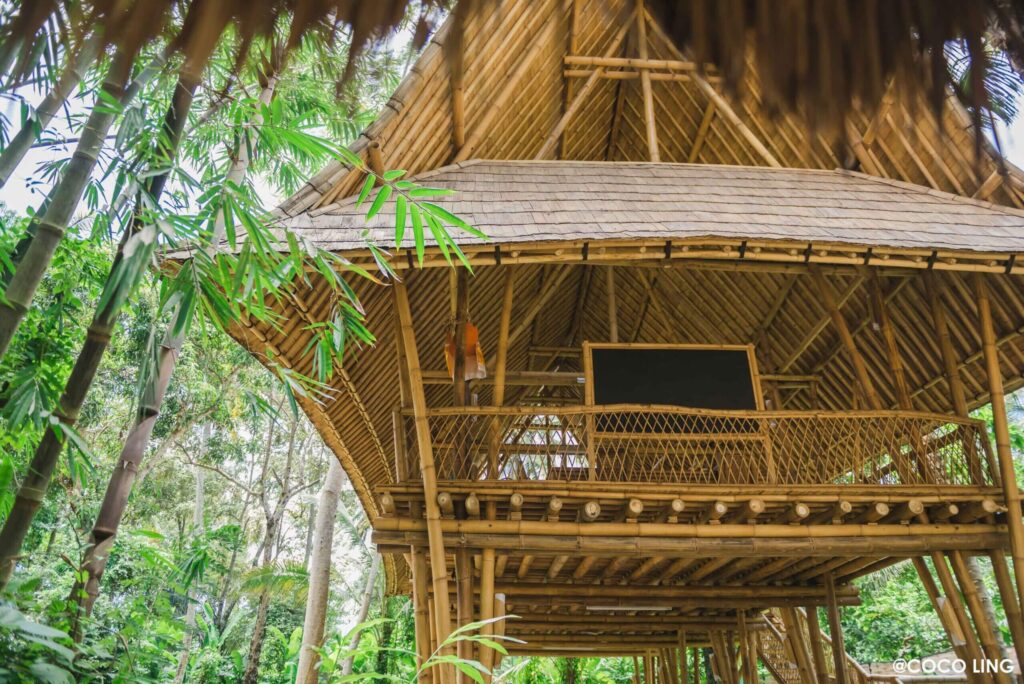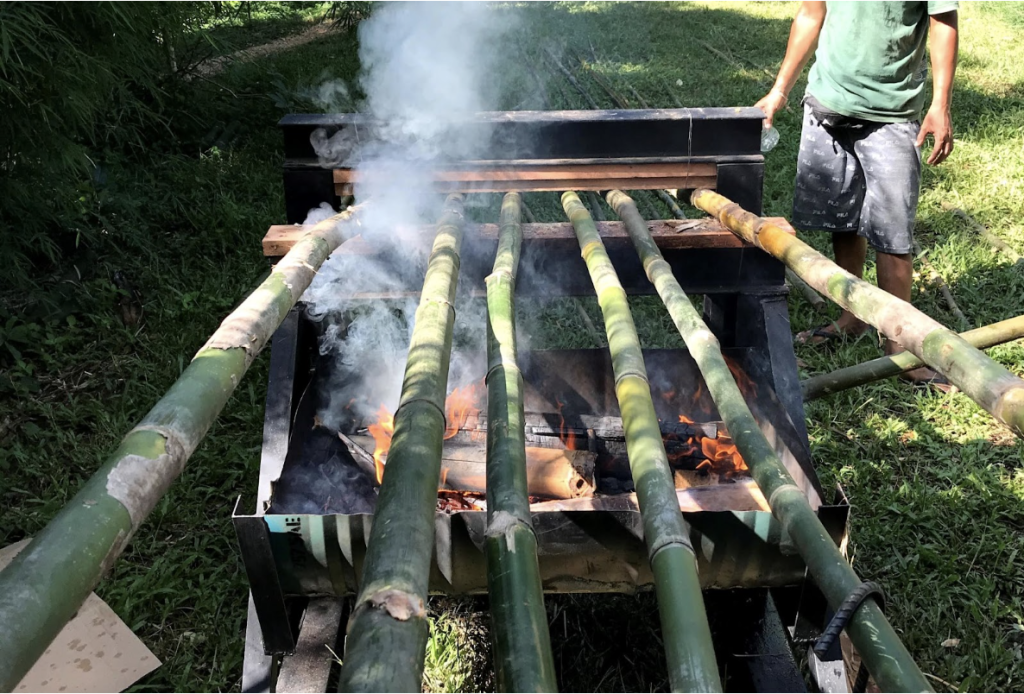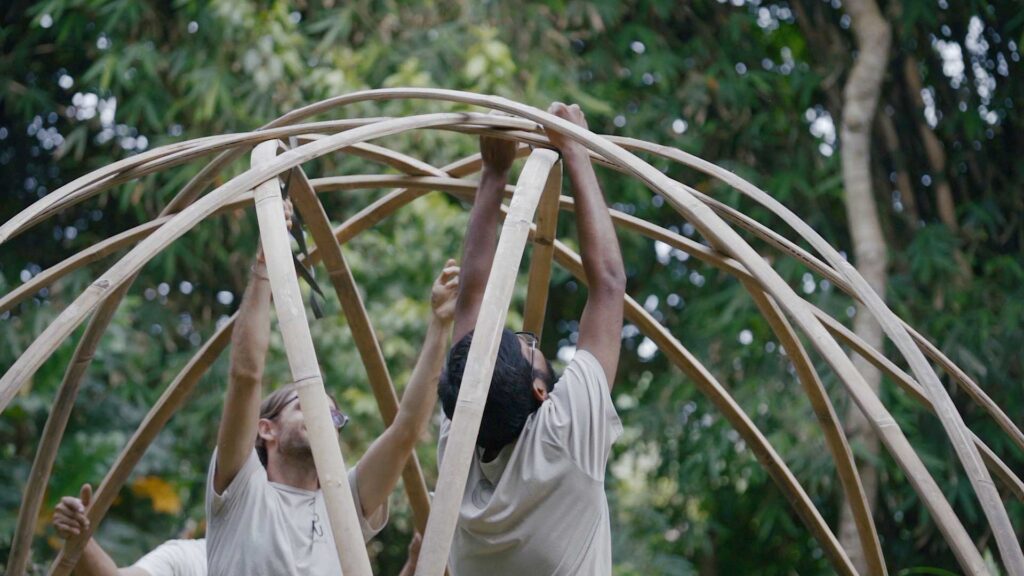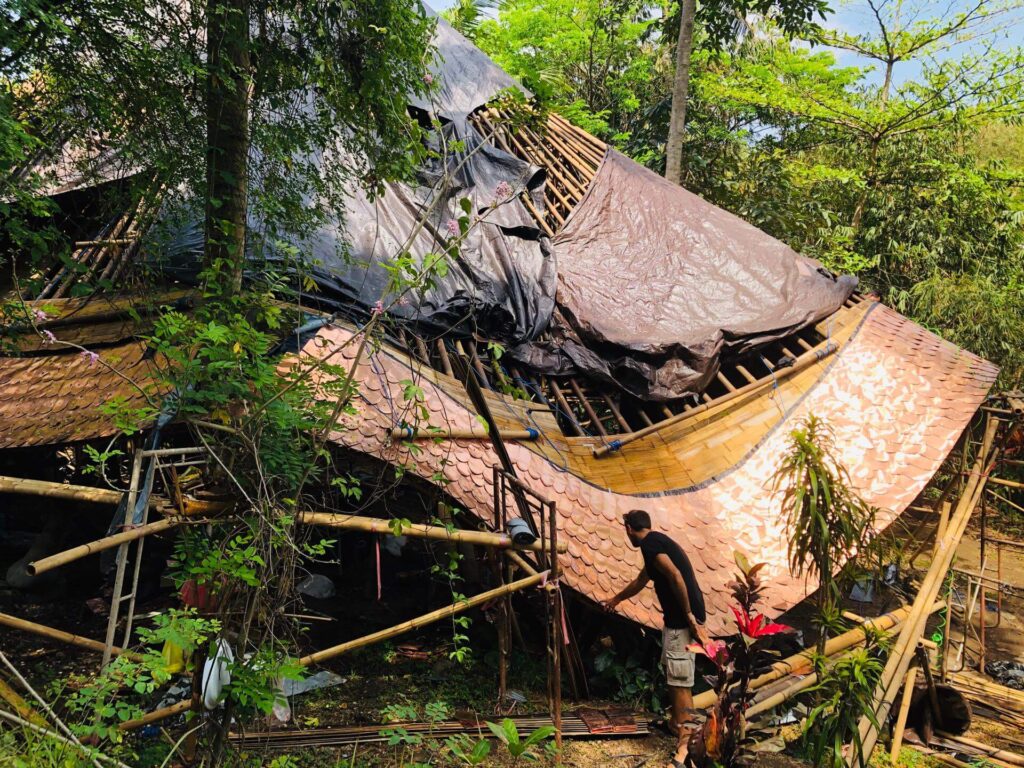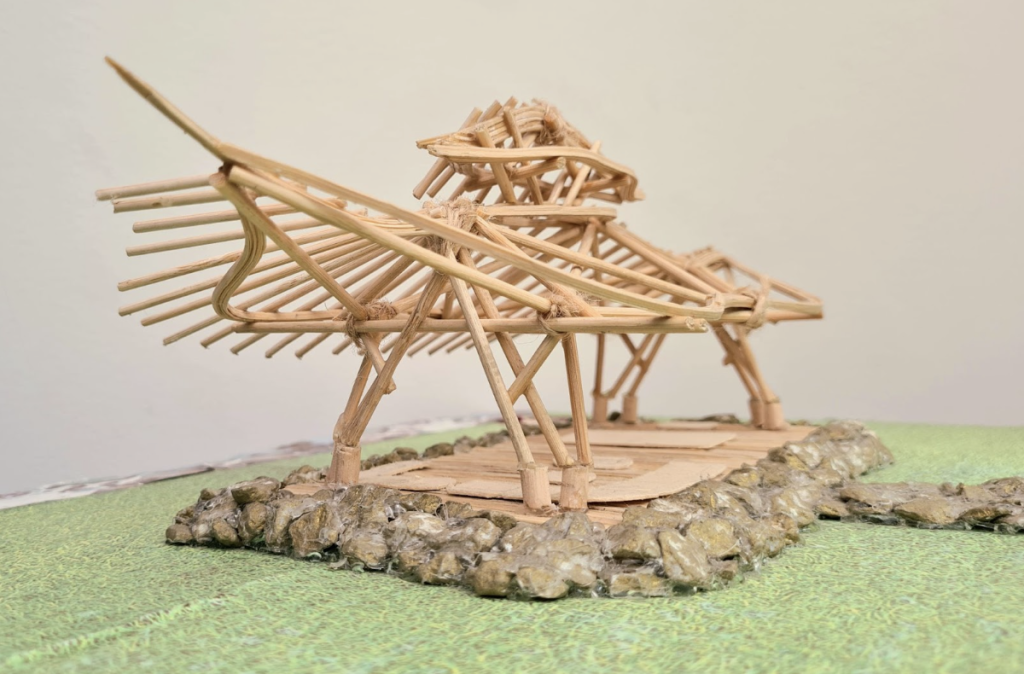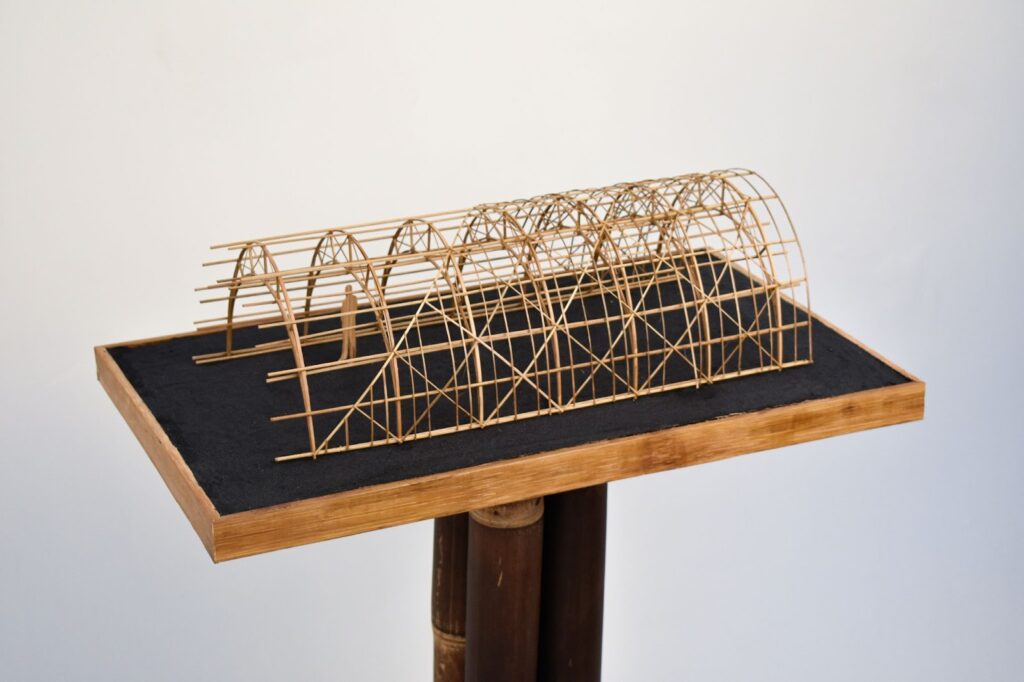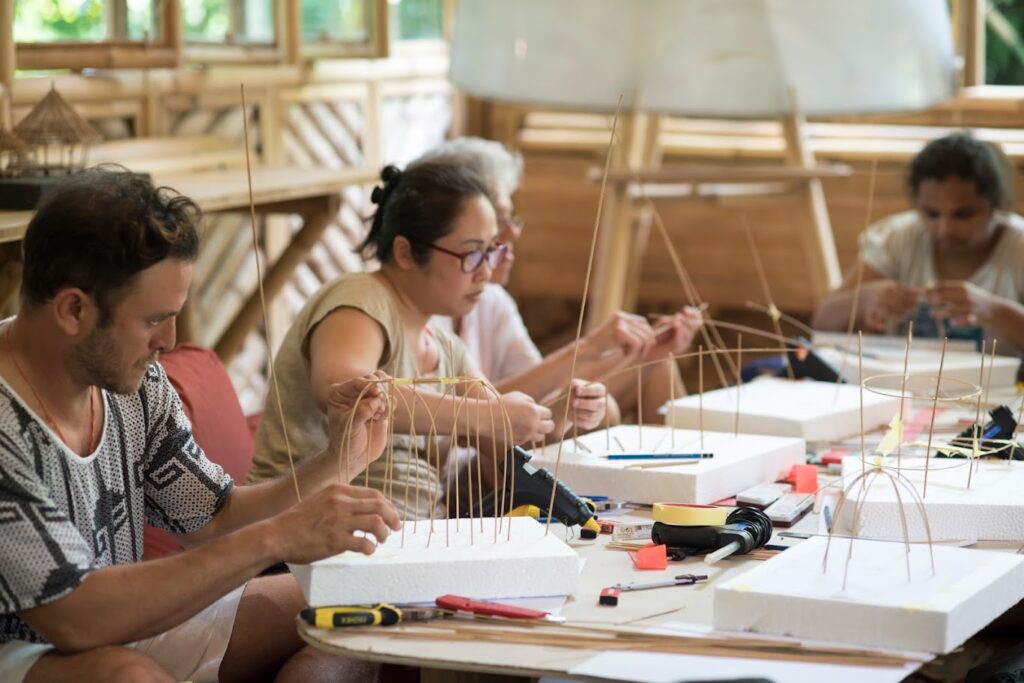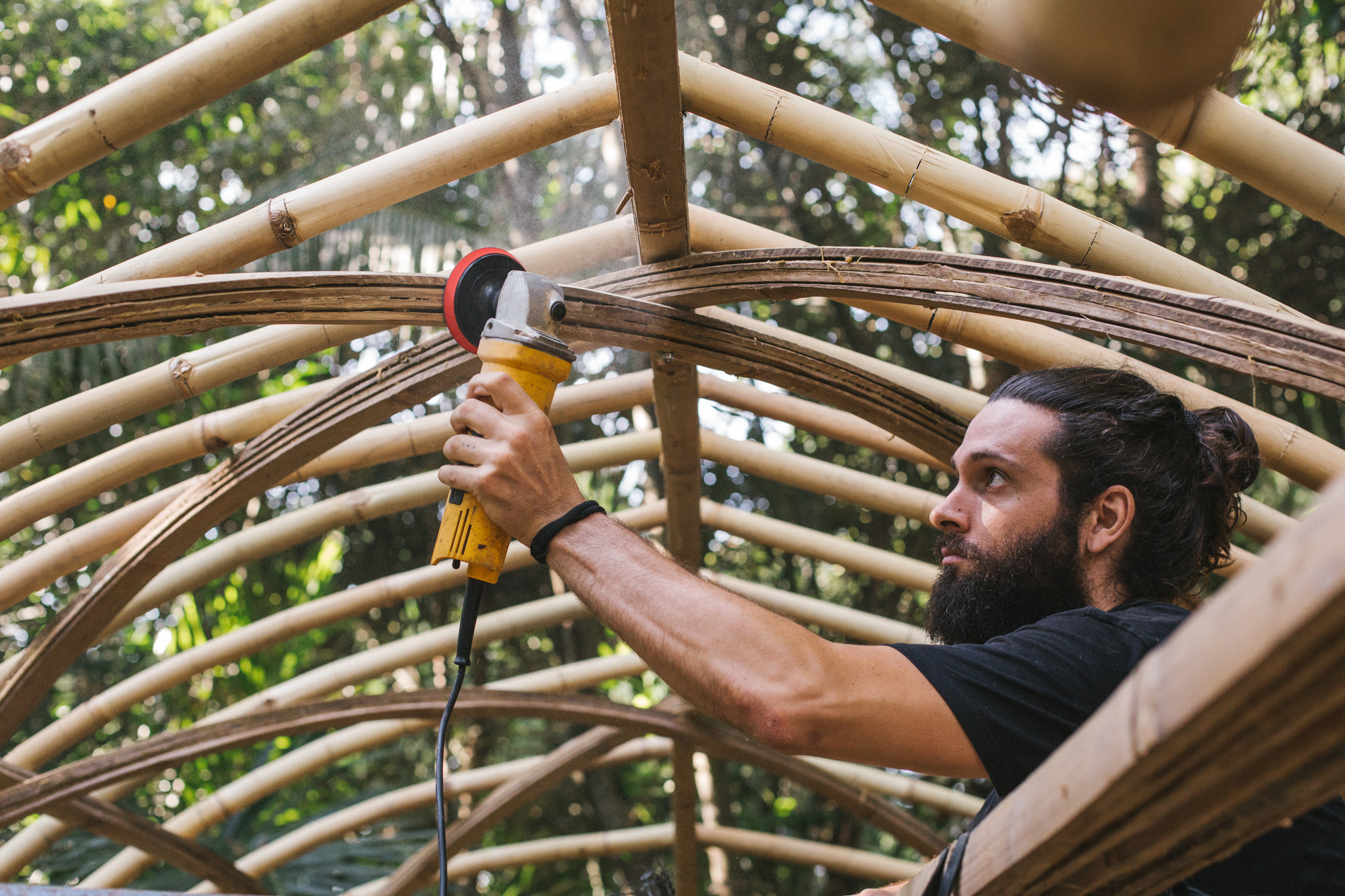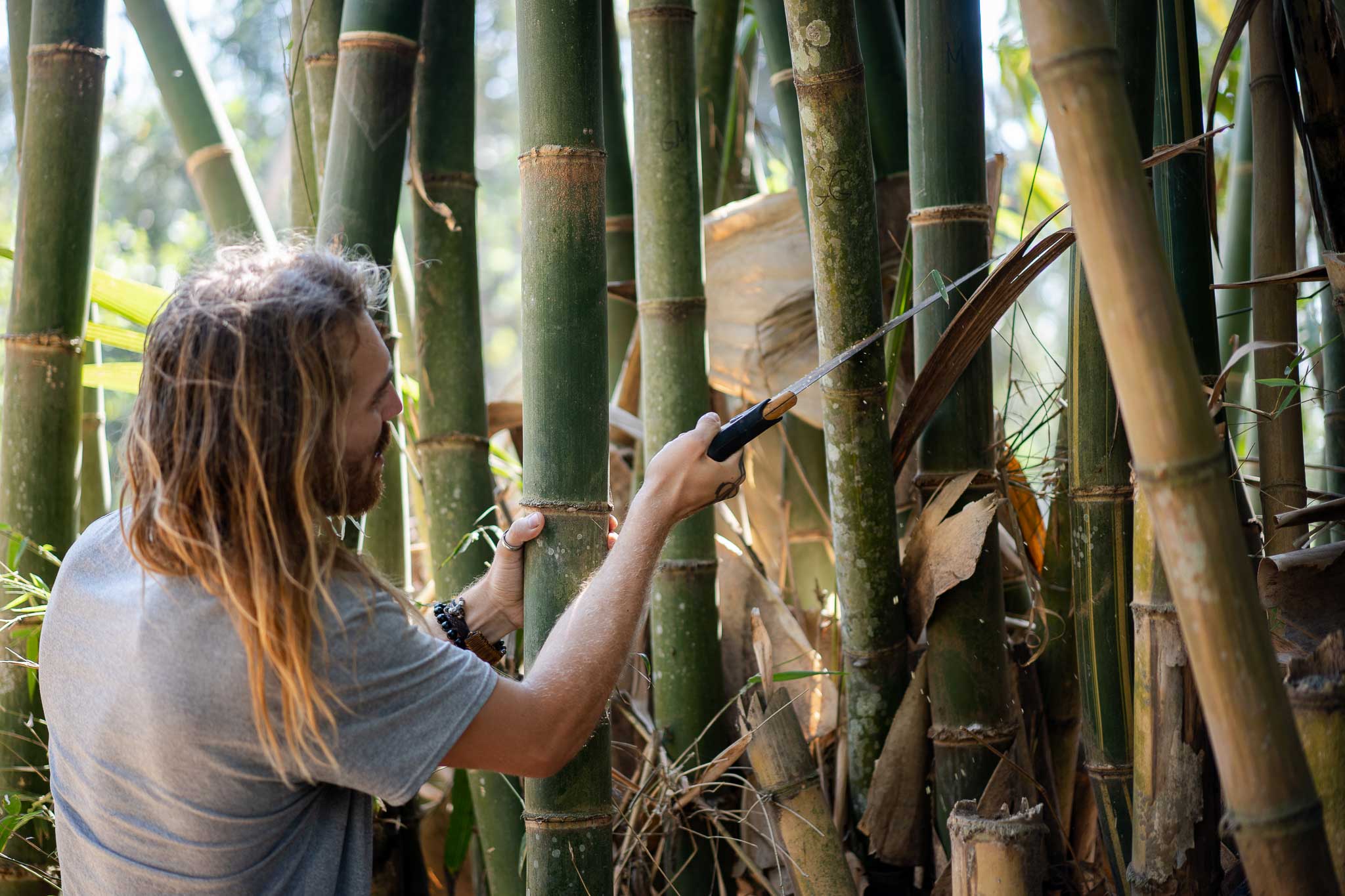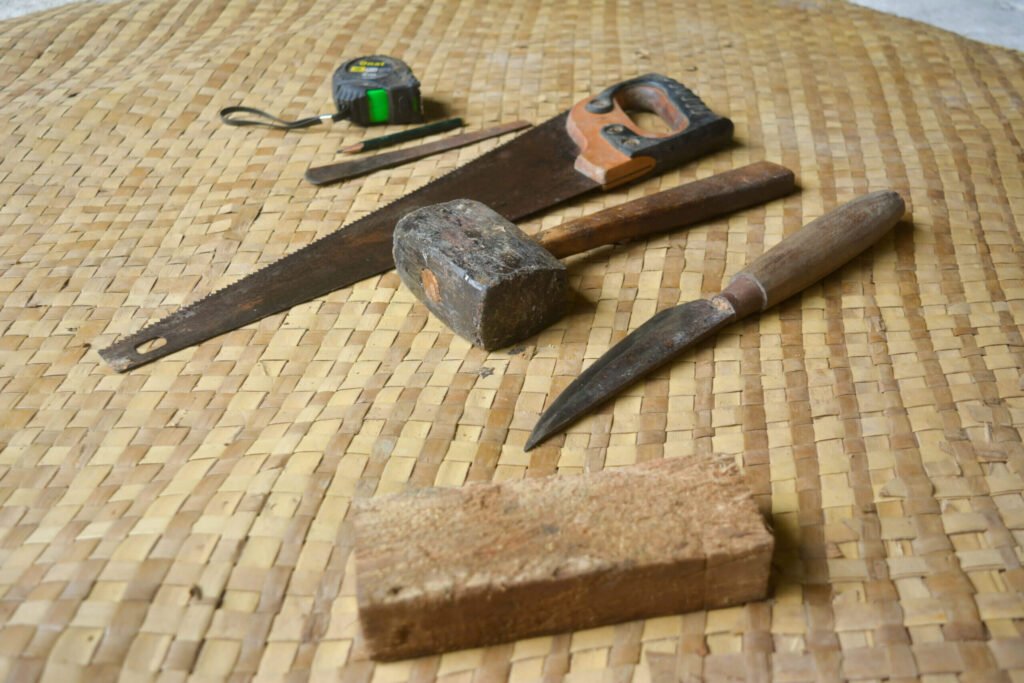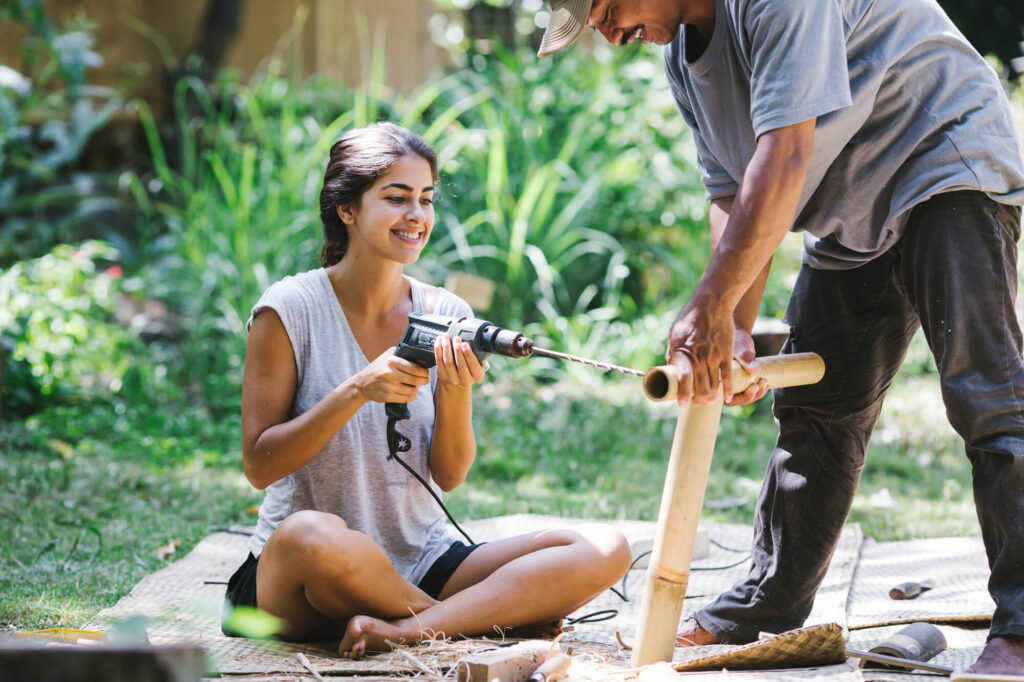How to Craft Multiple Pieces from One Bamboo Pole
By María Clara Falquez | July 26, 2024 | Carpentry and Processing -
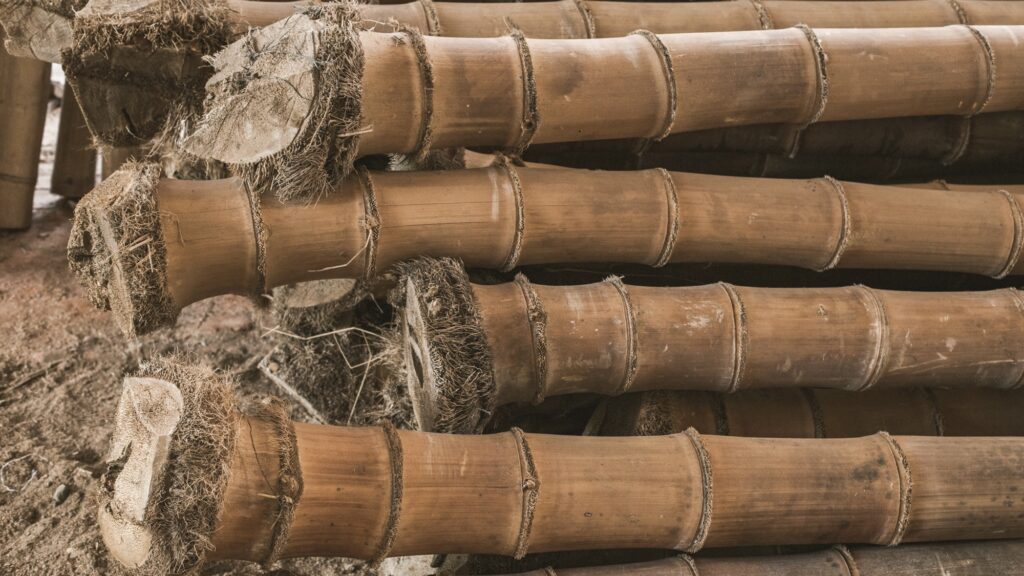
Discover the versatility of bamboo in construction with this comprehensive guide. Explore how a single bamboo culm can be transformed into various elements like splits, planks, flattened bamboo, bones, and lidi bundles to address diverse building needs. Discover the versatility and sustainability of bamboo elements for flooring, furniture, roofs, and more.
To fully harness the potential of bamboo in construction, it's essential to leverage its natural attributes. The cylindrical structure of bamboo lends itself to versatile transformations, offering a variety of elements capable of addressing a wide range of construction needs.
This article sets out to examine the array of elements that can be derived from a single bamboo culm, including:
- Splits
- Planks
- Flattened bamboo
- Bones
- Lidi bundles
Splits
Splits are created by longitudinally dividing bamboo culms. Depending on the desired finish, bamboo can be used with its outer skin intact or with just the inner part. Splits are versatile and can be used for flooring, furniture, and even window and door frames.

Planks
Planks are formed by joining splits together. The final product varies based on the type of splits used and the method of joining them. Planks are commonly used for flooring and furniture pieces.

Flattened bamboo
Flattened bamboo pieces are made by cutting a bamboo culm longitudinally and then flattening it through internal cuts. This traditional method is highly versatile, making it one of the most common ways to use bamboo. Flattened bamboo can be utilized for roof shingles, furniture, and even walls.

Bones
Bones are perhaps the most aesthetically pleasing pieces that can be derived from bamboo. Their natural beauty makes them a key element for enhancing the visual appeal of any construction. They are created by extracting the middle section of a culm while preserving its nodes.

Lidi Bundles
Lidi bundles are crafted from small sticks made from the inner part of bamboo. These bundles are ideal for curved designs, primarily used to support roofs with organic shapes. Their flexibility and strength make them perfect for intricate architectural features and detailed craftsmanship, adding both structural integrity and aesthetic value to construction projects.
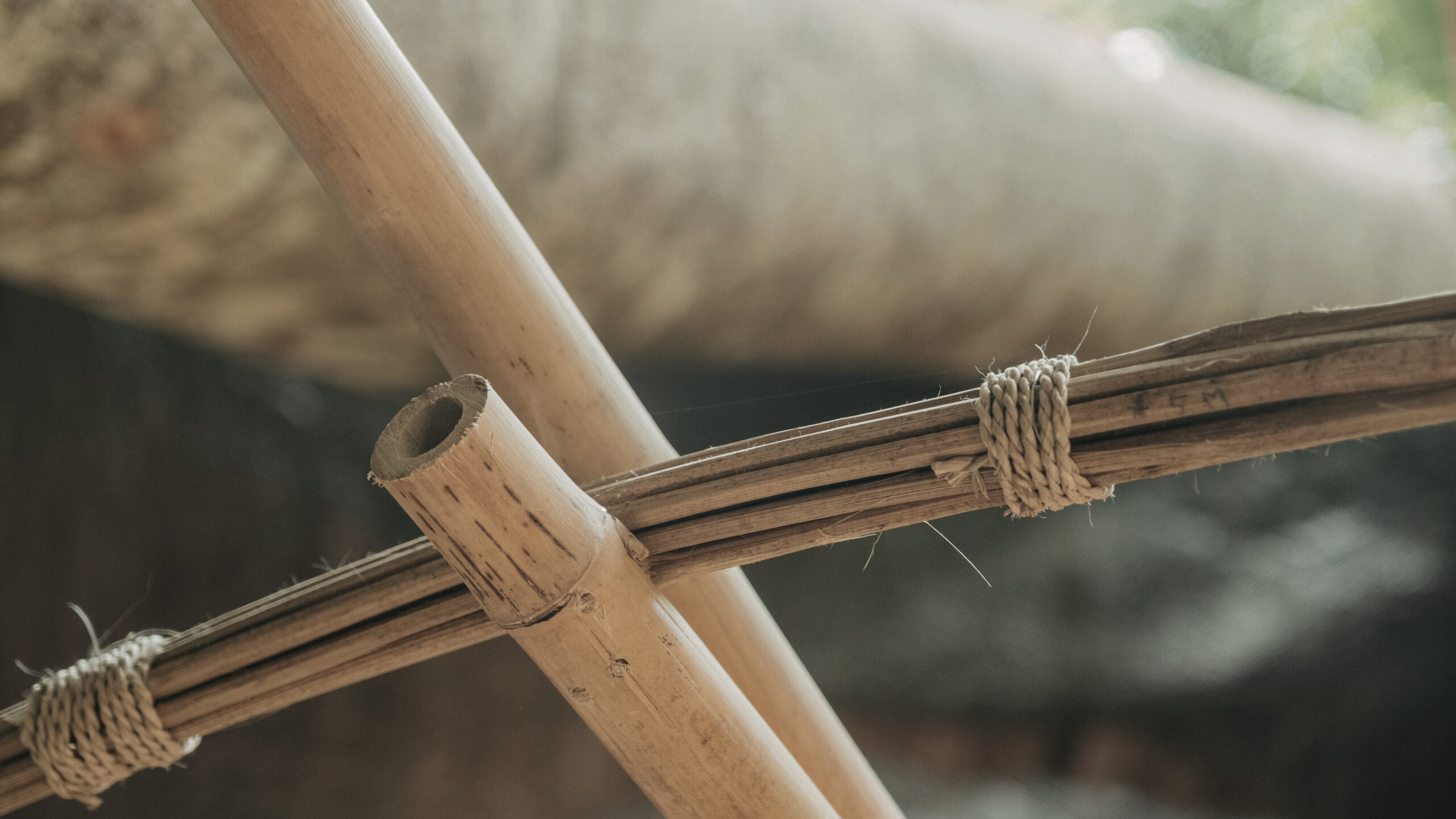
By understanding and utilizing these elements effectively, we can unlock the remarkable versatility and sustainability of bamboo in modern construction practices.

Maria Clara is an architect from Ecuador, specializing in bio-construction. She is committed to promoting local practices and natural materials. She firmly believes in the power of education and collaboration as the way forward.
JUNE 13-24, 2025
The 11 Day Bamboo Build & Design Course in Bali
In 11 days, we'll show you how to build bamboo structures we’ll share all that it takes to build with nature.
Start Anytime
The Bamboo Harvesting Course
The Bamboo Harvesting Course is an online step-by-step training to harvest and care for your bamboo clumps to ensure their longevity and productivity. This maximizes the potential of this beautiful grass as a rapidly renewable resource.Whether you are an architect, builder, or sustainability enthusiast, this mini course will enable you to utilize this rapidly regenerative resource as a durable construction material.It will help remove any fear or doubt about the durability of bamboo and help you build reputable bamboo structures that stand the test of time!

